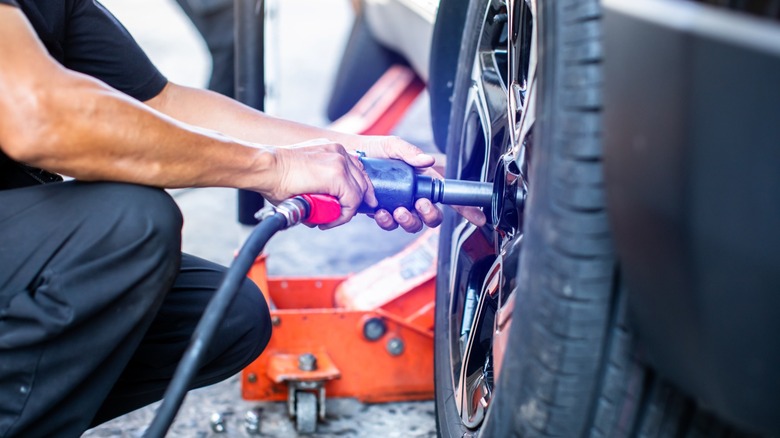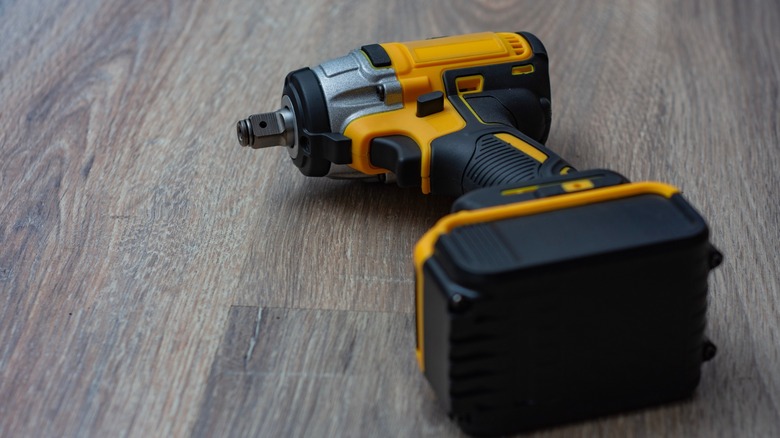How Exactly Does An Impact Wrench Work?
When it comes to powerful hand tools, few are as loud and intense as the impact wrench. Despite how loud and intense they are, there is a chance you might mistake one for a standard drill if you're not familiar with the differences. After all, they are found in the same places: garages, workshops, and pit lanes, among others.
Impact wrenches are the tools to use when you're looking to loosen or tighten bolts with speed and force. It's a staple for anyone working with heavy-duty fasteners. They just might be one of the tools to add to your collection in 2025. While a regular drill spins continuously, an impact wrench spins, then smashes. It repeats that cycle dozens of times per second. This is what gives it its trademark rattling sound. That sound is actually a series of high-torque impacts being delivered with precision.
It also generates a lot of torque. The average impact wrench can deliver several hundred Newton-meters (Nm) of torque. That's far more than most human wrists can manage without injury. To get a better understanding of how it manages this, let's take a look at just how an impact wrench works.
A proper introduction to impact wrenches
An impact wrench isn't just about brute force. It uses speed efficiently, delivering controlled bursts of force so it can do the job without stripping threads or damaging parts. Inside every impact wrench is a motor, a hammer mechanism, and an anvil. The motor, which can either be electric or pneumatic, initiates rotation. That rotation then drives a hammer assembly, which builds up rotational energy. Think of it like winding up a punch. It then releases that energy in a sharp, sudden blow to the anvil, which is directly connected to the socket. This rapid-fire sequence is what delivers those high-torque impacts.
The science behind this is simple. By not applying torque all at once, the tool avoids twisting your wrist into a pretzel. Instead, the impacts focus energy directly into the fastener. There's also a mechanical clutch in most models. This keeps the hammer disengaged until it reaches a certain force threshold. Once that threshold is crossed, the hammer connects with the anvil and delivers the blow. That's how impact wrenches manage high torque without hurting the operator or damaging the bolt.
Impact wrenches could be electric, cordless, or pneumatic. Cordless impact wrenches are growing in popularity thanks to battery advances and their combination of portability and muscle. If you're in the market for pneumatic tools, air-powered versions also exist, offering a lightweight tool with a good power-to-weight ratio.

